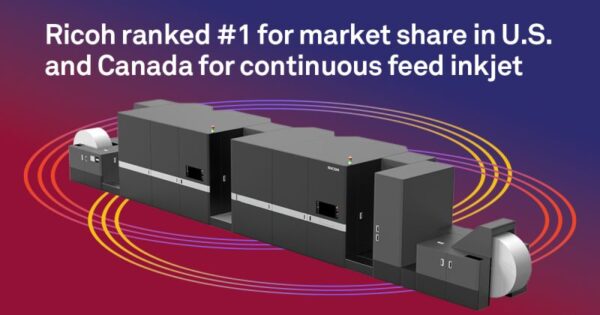The ultimate goal is crafting positive customer experiences.
It’s easy to think of customer service as keeping the office technology you’ve sold and installed up and running. Yet, how you do that is even more important. The foot soldiers of customer service are the people in your office who answer the phone and respond to questions and the techs who get elbow-deep in machines needing repair. Each leaves an impression on customers that must be positive.
According to Zendesk, an organization that helps companies enhance their customer interactions, customer service is the full range of support you offer customers from the first time they contact your business to any point afterward. This creates what is referred to as the customer experience, or CX, in our acronym-filled world. This is a combination of interactions between your business and customers from pre-purchase through all post-purchase activities.
Listen!
Customer service or a positive customer experience begins with listening, noted Dawn Abbuhl, president of Repeat Business Systems, an office technology dealer in Albany, New York. It begins before the sale is made. “Listening, repeating the stated need or issue, writing it down to ensure accuracy, and assuring the customer their need will be addressed, all in a friendly voice makes you human and kind in a customer’s or prospect’s eyes,” she said. “Always identify yourself by name and get their name. If you’re on the phone, be sure to get contact information in case of a disconnection. Don’t rush. Make them feel important.”
Abbuhl’s approach is backed up by Hotjar.com, a company that notes how part of ensuring a good customer experience comes from asking questions, listening to responses, and acting on what customers say. Hotjar’s site also lists things that can spoil customers’ days:
- Long wait times
- Employees not understanding customer needs
- Unresolved issues or questions
- Too much automation and not enough of a human touch
- Service lacking a personalized experience, and
- Rude or insensitive employees.
Learn!
To learn from its customers, Abbuhl’s Repeat Business Systems uses Net Promoter, a firm that surveys customers to help identify where improvements can be made and how a business compares with others. Net Promoter has helped Abbuhl compare customer ratings of her company with others, including similar firms. “We can demonstrate that our ratings have been over 90% since we started using Net Promoter six years ago,” she said.
You can do such questioning internally, but the results have greater credibility when gathered by a third party. Still, it’s always smart to call a customer who a service tech said was unhappy and find out how to make it right. First, you don’t want to lose the customer; second, you don’t want a customer bad-mouthing you to other companies.
Third, and ultimately more important, calling shows you care. It’s always better when a customer tells others how you made them happy. Call the customer, find out what will make them happy, and learn how your company can better serve the customer’s needs. Sometimes, a customer may want or need to vent, so let them do that. Take notes. Then, find ways to address those needs.
Use OEM Knowledge and Expertise to Enhance Customer Service
Being accessible and pleasant is pretty much expected. Prompt break-fix and basic service calls are other givens, but there is more. One resource is your OEMs. They have been at this for a while, and dealers should never hesitate to leverage vendors’ investments in support and education. I wondered what vendors thought office technology dealers could do so I reached out to a couple of vendors to get their take.
It begins with dealers knowing more about their customers. Ricoh suggests techs make a habit of doing something many already do—tapping into remote diagnostic systems to know which part a machine needs before leaving their dealership. This can be advantageous because some customers think a technician arriving with a needed part is almost magical and can ensure a positive customer experience.
Similarly, Toshiba suggests using Elevate Sky, a cloud platform that draws on big-data analytics and artificial intelligence to gain insights into a customer’s MFPs. The service offers predictive and proactive support that can help reduce dealer costs while increasing client uptime.
Ricoh also suggested that dealer techs take advantage of additional training to prepare to handle issues that emerge at a customer site. This is especially important because new models usually have more features service techs may not be familiar with. Moreover, as light production systems become available, sales and service people should be in step to ensure customer satisfaction. Be sure to talk with your OEMs before selling light production machines because these boxes arrive with higher customer expectations and greater support requirements. Preparation aids the customer experience.
Food for Thought
Defining customer service varies widely, so let me offer up some observations:
- Have you ever experienced poor or inept customer service from any company? How did you react? What did it tell you about the company involved? What would you do differently? How can you apply what you learned to your dealership?
- Does your dealership do anything to ensure loyalty? If you do, in what way does this differentiate your business? Can you do it better?
- Have you ever called your dealership (or had someone call it) with a complaint to see how your team responds? What did you learn? In what ways could the customer service you provide be improved?
- Do you follow up customer interactions with a questionnaire or survey? If you do, what do you learn?
When checking on your own dealership, you may find that one or more people on your team are not as supportive of customer needs as they might be. The incorrectly or inadequately trained people in customer-facing roles can torpedo your business without you knowing it. For example, suppose a competitor selling a different make of equipment is poaching your customers. They may be capitalizing on unhappy customers while taking money out of your pocket. It could be that the competitor can deliver or promise a better customer experience. You might never know. Yet the other dealer is eating your lunch.
Providing excellent customer service and a positive customer experience can be differentiators that help companies choose your dealership. That alone is a good reason to make every effort to ensure customers are well-cared for, happy, and coming back.





